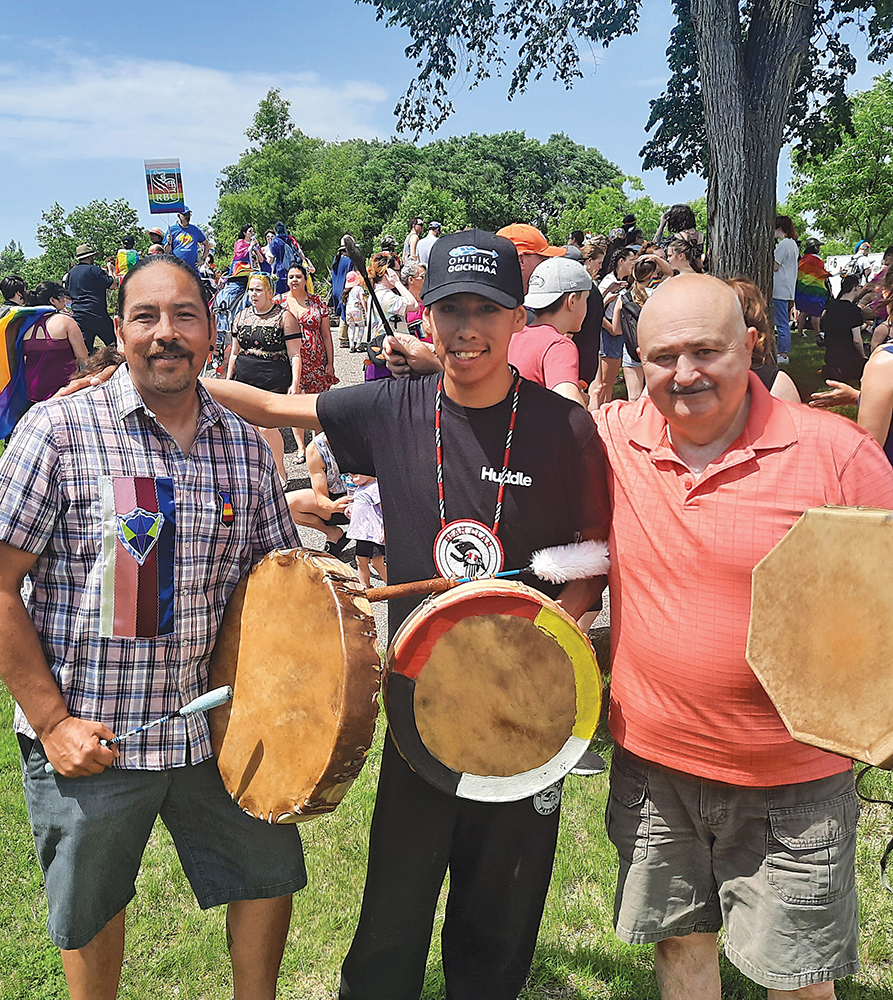
The new scientific director of Canada’s Institute of Indigenous Peoples’ Health says the fact that she got the job shows that the narrative of Indigenous health research is changing.
Dr. Chelsea Gabel, a Red River Métis woman, was appointed in October 2024 to lead the institute. It’s one of 13 that make up the Canadian Institutes of Health Research (CIHR), the federal funding agency for health research.
“I’m an arts-based, community-engaged scholar,” said Gabel, who is originally from Rivers, Man. “I’m not your typical CIHR health researcher.”
Gabel was a keynote speaker at the 12th annual Indigenous Health Research Symposium at UM, held in November 2024 on the Bannatyne campus.
The gathering was hosted by Ongomiizwin – Research, part of the Indigenous Institute of Health and Healing in the Rady Faculty. The overall theme was “Changing the Narrative.”
Gabel holds a Canada Research Chair at McMaster University in Indigenous well-being, community engagement and innovation. Indigenous research, she said, is increasingly being conducted through an Indigenous lens, fully involving communities, using data-collection methods such as storytelling, and ensuring that communities have sovereignty over their data.
“We can carry out research that is developed with, by, and for First Nations, Inuit and Métis Peoples,” she said.
Vanessa Van Bewer [BRS/00, MN/13, PhD/21], a Red River Métis assistant professor of nursing at UM, gave a keynote presentation about a research project she recently led. It focused on identifying disparities experienced by BIPOC (Black, Indigenous, People of Colour) nursing students at UM, and on challenging colonial narratives in nursing education.
One finding, Van Bewer said, was that the attention now being focused on Indigenous identities and curriculum content in nursing education can make Indigenous students feel singled out.
“Indigenous students experience hyper-visibility, where Indigenous topics are highlighted but not deeply engaged with, which can feel superficial and inauthentic…. This often places students in uncomfortable roles, feeling pressure to represent their culture, which adds stress and creates a sense of tokenism.”
Special supports that are intended to help Indigenous students succeed can have an isolating and pathologizing effect, the study found.
Van Bewer urged UM to consider whether the targeted supports offered to Indigenous students should be broadened into more inclusive supports.
Another keynote speaker at the symposium, Dr. Marti Ford [BA/92, B.Ed./94, M.Ed./07], is associate dean, Indigenous education in the UM Faculty of Education. She is of mixed Inuit and settler heritage.
Ford spoke about collaborating with Brandon University researchers to deliver and evaluate a land-based cultural program for Indigenous men.
The men took part in ceremonies and acquired traditional knowledge through activities such as moose hunting, drum making and sweat lodge building. They used the participatory “photovoice” method to document these experiences.
The study found that the program fostered close relationships and a sense of purpose among the men, awakened their Indigenous pride and had strong positive effects on their mental health.
“There’s a growing body of research on the importance of cultural connection, teaching and ceremony, particularly in relation to Indigenous health and well-being,” Ford said.
BY ALISON MAYES
